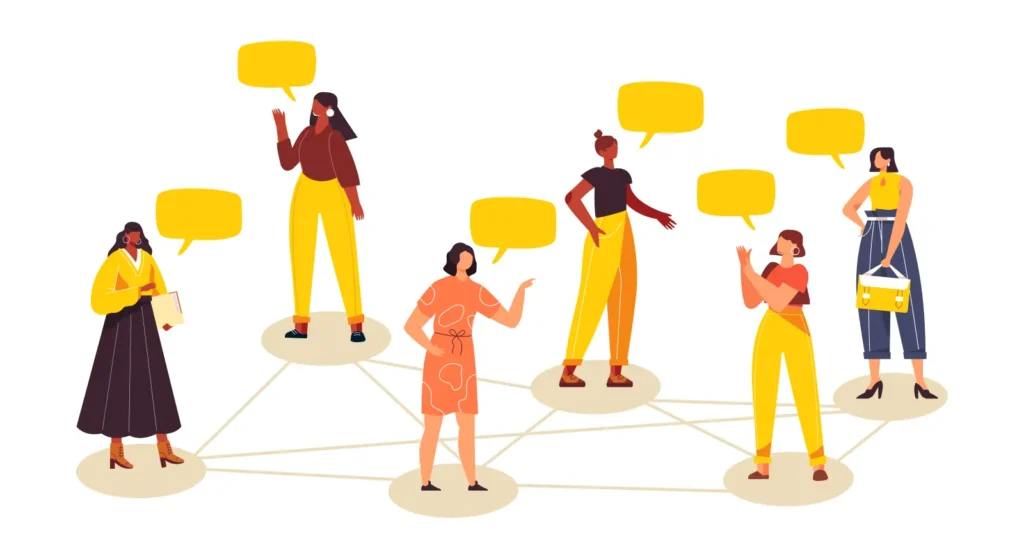
Employment discrimination occurs when an employee or job applicant is treated unfavorably because of characteristics such as race, gender, age, disability, religion, or sexual orientation. This can manifest in various forms, including hiring biases, unequal pay, lack of promotions, harassment, and unfair dismissal. Discrimination can be overt or subtle, but its impact is invariably detrimental to the individual and the organization. If you need any guidance and support in such matters, consulting a Princeton NJ employment law attorney can be invaluable.
Table of Contents
The Impact on Employee Morale

Source: yoursapp.com
Discrimination profoundly affects employee morale. When employees perceive that they are being treated unfairly, it leads to feelings of frustration, anger, and helplessness. This emotional distress can result in decreased motivation and engagement. Employees who experience or witness discrimination are less likely to feel valued and appreciated, leading to a significant drop in their productivity and overall job satisfaction.
“I Don’t Belong Here”
Feeling out of place or unwelcome is a common sentiment among employees facing discrimination. This feeling of not belonging can lead to isolation and disengagement from the team and the company. When employees do not feel integrated into the company culture, they are less likely to contribute fully to their roles, stifling innovation and creativity.
The Ripple Effect on Team Dynamics

Source: dbdlawfirm.com
Discrimination impacts not only the individuals directly affected but also the broader team dynamics. Witnessing or being aware of discriminatory practices can create an environment of distrust and tension among employees. Team members may become reluctant to collaborate or communicate openly, fearing similar treatment or simply feeling uncomfortable in a toxic work environment.
Erosion of Trust

Source: linkedin.com
Trust is the cornerstone of effective teamwork. When discrimination is prevalent, trust among colleagues and between employees and management is severely compromised. This erosion of trust can lead to increased conflicts, reduced cooperation, and a general decline in the quality of work produced by the team.
Legal and Financial Repercussions
Organizations that allow discriminatory practices to persist are at risk of facing significant legal and financial repercussions. Employment discrimination lawsuits can be costly, both in terms of legal fees and settlement payouts. Additionally, the negative publicity associated with such cases can damage the company’s reputation, making it harder to attract and retain top talent.
High Turnover Rates

Source: justiceatwork.com
Employees who experience discrimination are more likely to leave the company, leading to high turnover rates. This constant churn of employees can be financially draining due to the costs associated with recruiting, hiring, and training new staff. Moreover, the loss of experienced and skilled employees can disrupt business operations and diminish organizational knowledge.
Stifling Innovation and Growth
A diverse and inclusive workforce is essential for fostering innovation and growth. When employees from different backgrounds and perspectives are valued and included, they bring unique ideas and solutions to the table. However, discrimination stifles this potential by creating a homogenous environment where only certain voices are heard, and others are marginalized.
The Cost of Homogeneity
Homogeneity in the workplace limits the variety of ideas and perspectives necessary for innovation. Companies that fail to embrace diversity miss out on the benefits of different viewpoints, which can lead to stagnation and a lack of competitive edge in the market. Embracing diversity and combating discrimination is not just a moral imperative but a strategic advantage.
Building an Inclusive Company Culture

Source: forbes.com
Addressing and eliminating employment discrimination requires a proactive and comprehensive approach. Organizations must commit to creating an inclusive culture where every employee feels valued and respected. This involves implementing policies and practices that promote diversity, equity, and inclusion.
Training and Education
Regular training and education on diversity and inclusion are essential for raising awareness and understanding of discrimination issues. Employees and managers should be educated on recognizing and addressing unconscious biases, fostering a respectful workplace, and understanding the legal implications of discriminatory practices.
Clear Policies and Accountability
Organizations must have clear anti-discrimination policies in place, outlining what constitutes discrimination and the consequences for engaging in such behavior. It is crucial to ensure that these policies are communicated effectively to all employees and that there are mechanisms for reporting and addressing complaints. Holding individuals accountable for discriminatory actions is key to fostering a culture of respect and equality.
Leadership Commitment
Leadership commitment to diversity and inclusion is vital for driving meaningful change. Leaders must model inclusive behavior and demonstrate a genuine commitment to creating a fair and equitable workplace. This involves not only setting the tone from the top but also actively engaging with employees, listening to their concerns, and taking decisive action to address issues of discrimination.
Empowering Employee Resource Groups

Source: goodera.com
Employee resource groups (ERGs) can play a significant role in promoting inclusion and providing support for underrepresented employees. These groups offer a platform for employees to connect, share experiences, and advocate for positive change within the organization. Empowering ERGs and involving them in decision-making processes can help create a more inclusive and supportive work environment.
Measuring Progress and Impact
To ensure that efforts to combat discrimination are effective, organizations must regularly measure and evaluate their progress. This involves collecting data on diversity and inclusion metrics, conducting employee surveys, and analyzing trends to identify areas for improvement. Transparent reporting on these metrics can also build trust and demonstrate the organization’s commitment to continuous improvement.
Continuous Improvement

Source: chieflearningofficer.com
Creating an inclusive company culture is an ongoing process that requires continuous effort and improvement. Organizations must remain vigilant and adaptable, regularly reviewing and updating their policies and practices to reflect evolving best practices and legal standards. Engaging with external experts and benchmarking against industry standards can also provide valuable insights for driving progress.
The Bottom Line
Employment discrimination has far-reaching effects on company culture, impacting employee morale, team dynamics, innovation, and overall organizational success. Embracing inclusivity not only enhances employee well-being but also drives innovation, growth, and long-term success. The path to a more inclusive future starts with a commitment to equality and respect for all employees, ensuring that every individual has the opportunity to thrive and contribute to the organization’s success.







